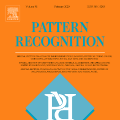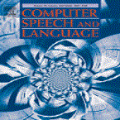人工智能 | SCI期刊约稿信息6条
人工智能
Computer Speech and Language
Results from the 6th Dialog System Technology Challenge (DSTC6)
全文截稿: 2018-02-28
影响因子: 1.9
CCF分类: C类
中科院JCR分区:
• 大类 : 工程技术 - 3区
• 小类 : 计算机:人工智能 - 4区
网址: http://www.journals.elsevier.com/computer-speech-and-language
The 6th dialog system technology challenge (DSTC6) explores how to apply End-to-End technologies to Dialog Systems in a pragmatic way. Concretely, DSTC6 consists of three tracks:
(1) End-to-End Goal Oriented Dialog Learning for table booking
(2) End-to-End Conversation Modeling for customer service on social media
(3) Dialog Breakdown Detection
For each track, we have released data and evaluation tools, as well as a baseline setups consisting of training tools and models. For all tracks, the final evaluation data will be released on Sep. 25th, with final results announced on Oct. 8th. In December, DSTC6 will hold a wrap-up workshop to review results. There are currently approximately 100 registered participants across the 3 tracks. For more information, see http://workshop.colips.org/dstc6/index.html
This special issue will host work based on any of the three DSTC6 tasks. We anticipate most papers will describe DSTC6 entries, and we particularly welcome papers describing novel techniques that advance the state-of-the-art in dialog system technologies. Papers may describe entries in the official DSTC6 challenge, or work on DSTC6 data but outside or after the official challenge. We also welcome papers that analyze the DSTC6 tasks or results themselves.
人工智能
Cognitive Systems Research
Virtual Special Issue on Deep Learning approaches for Cognitive Systems
全文截稿: 2018-03-31
影响因子: 1.182
中科院JCR分区:
• 大类 : 工程技术 - 4区
• 小类 : 计算机:人工智能 - 4区
• 小类 : 神经科学 - 4区
网址: http://www.journals.elsevier.com/cognitive-systems-research/
Over a past few decades, deep learning has shown remarkable performance in many application domains such as speech recognition, natural language processing (NLP), and information retrieval. It has wider range of applications due to its capability in solving many complex tasks. Deep learning simulates and augment human thinking to make decisions. The academia and industry have been in a race to deploy it as systems of intelligence to derive meaning from information and apply judgment.
Deep learning, along with many other disciplines within the field of artificial intelligence and cognitive systems, is gaining popularity, and it has colossal impact on the software industry. The discipline of deep learning also incorporates other data analysis disciplines, ranging from predictive analytics and data mining to pattern recognition. The editors expected to gather a set of recent advances in the related topics, to offer a platform for scientist and researchers to exchange their innovative ideas.
This Virtual Special Issue (VSI) intends to bring together for theoreticians and practitioners from academic fields and industries worldwide working in the broad range of topics relevant to machine learning techniques in the field of multimodal data processing and analysis, including cross modal search and retrieval, cross modal hashing, pattern recognition and fusion. Application areas can cover but are not limited to Robotics, Human-Computer Interaction, Image processing, Social Media, Video Surveillance and Computer Vision.
Recommended topics include (but are not limited to) the following:
- Cognitive Computing For Smart Machine
- Decision Making And Reasoning
- Robotics
- Modeling Practices Using Deep Learning
- Social Networks And Social Contagion On Networks
- Human – Computer Interaction
- Agent Based Modeling
- Human-Machine Interactive Systems
- Cognitive Architectures
- Intelligent Data Analysis System
- Cognitive Recommender Systems
- Spatial Problem Solving
- Social Learning And Culture
- Big data Analytics
人工智能
Neurocomputing
Special Issue on Deep Understanding of Big Multimedia Data
全文截稿: 2018-04-01
影响因子: 3.317
CCF分类: C类
中科院JCR分区:
• 大类 : 工程技术 - 2区
• 小类 : 计算机:人工智能 - 3区
网址: http://www.journals.elsevier.com/neurocomputing/
During the past decade, large-scale multimedia data (e.g., video, images, audios, text) can be easily collected in different fields and pattern discovery from these raw data has been attracting increasing interests in the multimedia domain. Semantically understanding multimedia data can substantially enhance their practical applications. In reality, current multimedia techniques still cannot provide satisfied understanding of multimedia data. There still exists a gap between extracting representations (or knowledge) from big multimedia data and practical demands. In this case, data-driven understanding through shallow models and deep learning methods is very important and has been attracting a huge number of interests in data science and artificial intelligence.
Goals and topics
This special issue provides a forum for researchers to focus on their study in the new trends of deep understanding of big multimedia data and their applications. To do this, we invite papers (including a survey paper) to address the challenges in understanding of big multimedia data. The list of possible topics includes, but not limited to:
l. 3D multimedia data understanding:
- Feature extraction of 3D multimedia data via sequential dictionary learning, convolutional neural networks (CNN) and recurrent neural networks (RNN)
- Video/audio data analysis via supervised learning, unsupervised learning, semi-supervised learning methods, and Long Short Term Memory networks
- Video/audio captioning, tracking via sparse learning or deep learning methods
2. 2D multimedia data understanding
- Understanding and analysis of multimedia data (e.g., segmentations, prediction, and diagnosis/prediction) via shallow learning and deep learning
- Tools and applications for medicine and healthcare data (e.g. clustering, storing, ranking, hashing, and retrieval)
3. Multi-modal multimedia data understanding
- Deep pattern discovery from single-modal multimedia data
- Knowledge integration of multi-modal data through transfer learning and deep neural network
- Shallow/deep data fusion combing 2D multimedia data and 3D multimedia data
It is noteworthy that above topics have been widely and recently published in related major conferences, which serve as strong evidence of the potential paper submission sources to our special issue, including: ACM Special Interest Group on Management of Data (SIGMOD), ACM SIGKDD, Conference on Knowledge Discovery and Data Mining (KDD), International Joint Conferences on Artificial Intelligence (IJCAI), Association for the Advancement of Artificial Intelligence (AAAI), Neural Information Processing Systems (NIPS), International Conference on Machine Learning (ICML), ACM Multimedia (MM), IEEE Conference on Computer Vision and Pattern Recognition (CVPR), IEEE International Conference on Computer Vision (ICCV), etc.
人工智能
Neurocomputing
Special Issue on Virtual Images for Visual Artificial Intelligence
全文截稿: 2018-04-15
影响因子: 3.317
CCF分类: C类
中科院JCR分区:
• 大类 : 工程技术 - 2区
• 小类 : 计算机:人工智能 - 3区
网址: http://www.journals.elsevier.com/neurocomputing/
Recently, deep learning has become one of the core technologies of computer vision and artificial intelligence. Deep learning is a data-driven technology and its performance heavily relies on large-scale labeled data, e.g., ImageNet and MS COCO. Unfortunately, it is rather expensive to collect and annotate large-scale image data from the real world, the collected real images are limited in covering complex environmental conditions, and the real scenes are uncontrollable and unrepeatable. As a result, the performance of current deep learning systems is not satisfactory while working in complex scenarios, such as autonomous driving and intelligent monitoring scenarios.
In light of the disadvantages of collecting images from the real world, more and more researchers start to synthesize and use virtual images for computer vision research. A variety of advanced techniques including computer graphics simulation, image style transfer, and generative models have been used for virtual image generation. The virtual images are especially valuable to the training, testing, understanding and optimization of learning-based models in computer vision.
This special issue emphasizes the important role of virtual images in deep learning and computer vision research, and welcomes a broad range of submissions developing and using virtual images for visual artificial intelligence. The list of possible topics includes, but is not limited to:
- New image synthesis methods
- Computer graphics and virtual/augmented reality for scene simulation
- Graphics rendering techniques for generating photorealistic virtual images
- Image-to-image translation and video-to-video translation
- Image super-resolution
- Deep generative models related to virtual images (variational autoencoders, generative adversarial networks, etc.)
- Neural networks that learn from virtual images
- Domain adaptation methods for deep learning
- Understanding deep architectures using virtual images
- Intelligent visual computing with virtual images
- Virtual-real interactive parallel vision and parallel imaging
- Virtual images and artistic creation
- Applications of virtual images to intelligent systems (robots, autonomous vehicles, visual monitoring systems, medical devices, and so on)
人工智能
Pattern Recognition Letters
Virtual Special issue on Smart Pattern Recognition for Medical Informatics (ACRONYM: SPRMI )
全文截稿: 2019-01-31
影响因子: 1.995
CCF分类: C类
中科院JCR分区:
• 大类 : 工程技术 - 3区
• 小类 : 计算机:人工智能 - 4区
网址: http://www.journals.elsevier.com/pattern-recognition-letters/
It is well known fact that medical informatics has grown rapidly in the last one or two decades. As we progress newer medical informatics systems are being developed and put into use for providing better health care to the society. Pattern Recognition is key aspect for the success of any medical informatics system. The current and future trends are in developing smart pattern recognition systems which can learn, adapt and auto update for the next generation medical signal and image processing. This includes in developing smart pattern recognition algorithms which can update itself even after it is installed on site staying linked with various systems and databases across the world.
The topics include (but not limited to)
- Advanced Artificial Intelligence methods for medical signal processing
- Smart Classification Algorithms for medical diseases
- Self-Adapting systems for health informatics decision systems – Patient Care
- Real time signal processing for smart medical informatics
- Deep convergence and self-organizing smart systems for Pattern Recognition in Medical Data
- Smart Data mining for Medical Big Data
- Smart Pattern Recognition systems for Clinical biomedical signals
人工智能
Pattern Recognition Letters
Special issue on “DLVTA: Deep Learning for Video Text Analysis”
全文截稿: 2019-02-28
影响因子: 1.995
CCF分类: C类
中科院JCR分区:
• 大类 : 工程技术 - 3区
• 小类 : 计算机:人工智能 - 4区
网址: http://www.journals.elsevier.com/pattern-recognition-letters/
We are living in a world where we are seamlessly surrounded by multimedia content: text, image, audio, video etc. Much of it is due to the advancement in multimodal sensor technology. For example, intelligent video-capturing devices capture data about how we live and what we do, using surveillance and action cameras as well as smart phones. These enable us to record videos at an unprecedented scale and pace, embedded with exceedingly rich information and knowledge. Now the challenge is to mine such massive visual data to obtain valuable insight about what is happening in the world. Due to the remarkable successes of deep learning techniques, new research initiates are taken to boost video analysis performance significantly.
Deep learning is a new field of machine learning research, to design models and learning algorithms for deep neural networks. Due to the ability of learning from big data and the superior representation and prediction performance, deep learning has gained great successes in various applications of pattern recognition and artificial intelligence, including video processing, character and text recognition, image segmentation, object detection and recognition, face recognition, traffic sign recognition, speech recognition, machine translation, to name a few.
Deep video analytics, or video text analytics with deep learning, is becoming an emerging research area in the field of pattern recognition. It is important to understand the opportunities and challenges emerging in video text analysis with deep learning techniques, identify key tasks and evaluate the state of the art, showcase innovative methodologies and ideas, introduce large scale real systems or applications, as well as propose new real-world datasets and discuss future directions. This virtual special issue will offer a coordinated collection of research updates in the broad fields ranging from computer vision, multimedia, text processing to machine learning. We solicit original research and survey papers addressing the synergy of video understanding, text analysis and deep learning techniques. The topics of interest include, but are not limited to:
- Deep learning for video text segmentation
- Deep learning for video text analysis
- Deep learning for character and text recognition in video
- Deep learning for scene text detection and recognition
- Deep learning for text retrieval from video
- Deep learning for graphics and symbol recognition in video
- Video categorization based on text
- Deep learning for other CBDAR tasks, etc.
下载Call4Papers App,获取更多详细内容!


登录查看更多
相关内容
ACM 国际多媒体大会(英文名称:ACM Multimedia,简称:ACM MM)是多媒体领域的顶级国际会议,每年举办一次。
专知会员服务
19+阅读 · 2019年10月22日
Arxiv
16+阅读 · 2020年1月2日
Arxiv
78+阅读 · 2019年11月10日




